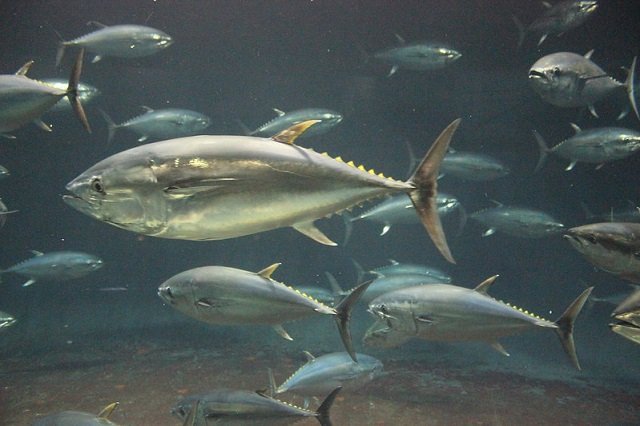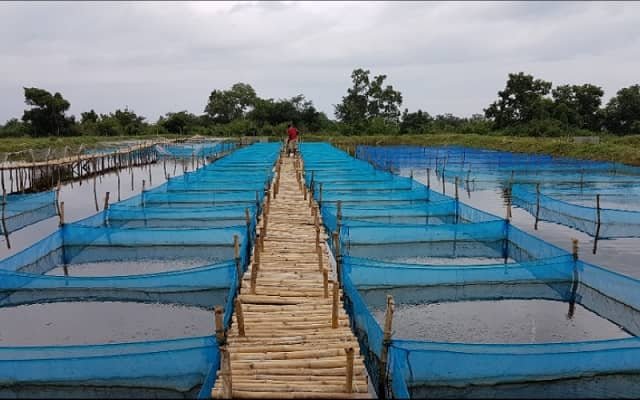
The success of aquaculture relies on providing optimal nutrition throughout the life cycle of target species, from delicate larvae to sexually mature adults. While artificial feeds offer convenience and cost-effectiveness, live feeds, particularly zooplankton, play a critical role in ensuring the health and vitality of aquaculture organisms.
A study published by scientists from Noakhali Science and Technology University and the University of Dhaka explores the importance of zooplankton in larval rearing, its nutritional value, and the challenges and opportunities associated with its use in sustainable aquaculture.
The nutritional imperative for larval survival
The early stages of life for fish and crustaceans are marked by rapid growth and development. During this period, larvae have unique nutritional requirements, including:
- High-quality proteins and essential fatty acids: Crucial for tissue growth and development, particularly in the nervous system.
- Vitamins and minerals: Essential micronutrients for proper physiological functioning and immune system development.
- Easily digestible food: Larvae’s underdeveloped digestive systems require easily digestible food sources.
Zooplankton, including rotifers, copepods, cladocerans, and Artemia, perfectly meets these needs. Their live nature makes them highly palatable for larvae, while their rich nutritional profile provides the essential building blocks for healthy growth.
Zooplankton: A cornerstone of larval diets
Nutritional value
Zooplankton serves as an excellent source of proteins, essential fatty acids, and other vital nutrients. By feeding on algae, zooplankton becomes a crucial link in the aquatic food web.
Palatability and digestibility
The live and mobile nature of zooplankton makes it highly attractive to larvae, stimulating feeding responses and improving digestion.
Water quality enhancement
Zooplankton improves water quality by feeding on algae and reducing organic waste, thereby mitigating the environmental impact of aquaculture operations.
Opportunities in zooplankton utilization for aquaculture
Superior nutrition
- Preferred live feed: Fish and crustacean larvae favor zooplankton due to its digestibility and digestive enzymes.
- Nutrient-rich: Zooplankton provides essential nutrients like fatty acids, proteins, vitamins, and minerals. Essential fatty acids such as linoleic and linolenic acids originate from algae, their primary food source.
- Growth enhancement: With a high water content and thin exoskeleton, zooplankton is easier to digest than dry artificial feeds. It also contains a high concentration of free amino acids, facilitating protein digestion.
Sustainability
- Eco-friendly: Zooplankton usage is more environmentally friendly than artificial feeds, producing no waste or water pollution.
- Algae control: Zooplankton helps regulate algae density and diversity in aquaculture ponds, controlling harmful algal blooms.
- Water quality indicator: Zooplankton serves as an indicator of water quality, benefiting aquaculture practices.
Economic viability
- Cost-effectiveness: Dried zooplankton biomass is more cost-efficient than fishmeal in organic aquaculture.
- Fishmeal substitute: Cladocerans like Daphnia and Moina can effectively replace fishmeal, reducing dependency on external sources and feed costs.
Improved quality and survival
- Better feed conversion: Zooplankton diets enhance feed conversion, fecundity, growth, and egg hatching while improving osmotic stress tolerance and broodstock survival.
- Optimal development: Zooplankton provides essential digestive enzymes that improve larval digestion, leading to better growth and survival rates.
Research and development
- Bio-enrichment and bio-encapsulation: Techniques like bio-enrichment and bio-encapsulation improve zooplankton’s nutritional value using microalgae, yeast, oils, vitamins, and minerals.
- Preservation: Advanced research includes zooplankton egg preservation to ensure continuous supply.
- Genetic improvement: Research is ongoing to genetically select high-performing zooplankton strains.
Challenges in zooplankton utilization
Production and cultivation
- Mass cultivation: Large-scale production of some zooplankton types, such as copepods, remains a challenge. Commercially viable cultivation methods are not fully developed for all zooplankton groups.
- Sensitivity: Certain zooplankton species, like copepods and cladocerans, are sensitive to water quality, making them harder to cultivate than rotifers, which tolerate organic contamination better.
- Contamination: Zooplankton can carry parasites, pathogenic bacteria (e.g., Vibrio sp.), pesticides, heavy metals, and microplastics. Avoiding collection from polluted environments is crucial.
- Culture collapse: Rotifer cultures can collapse due to ciliates, bacterial contamination, and overpopulation caused by short life cycles, complicating management.
- Handling difficulties: Limited knowledge about live feed handling makes adoption more challenging than artificial feeds.
Nutrition
- Variable nutritional value: Zooplankton’s nutritional profile can vary, with rotifers being less nutrient-dense compared to copepods and cladocerans.
- Enrichment needs: Zooplankton may lack specific nutrients, such as iodine, copper, zinc, selenium, and manganese, requiring enrichment with algae, oils, vitamins, and minerals.
Competition with artificial feeds
- Availability: Artificial feeds are more readily available in the market.
- Cost: Artificial feeds are often cheaper, making them a preferred choice for cost-conscious aquaculturists despite live feeds’ superior nutritional quality.
- Convenience: Artificial feeds are easier to store.
Conclusion
Zooplankton plays a vital role in sustainable aquaculture by providing essential nutrition for larval development. While artificial feeds offer convenience, live feeds, particularly zooplankton, are indispensable for ensuring the health, vitality, and ultimate success of aquaculture operations.
Stay Always Informed
Join our communities to instantly receive the most important news, reports, and analysis from the aquaculture industry.
By addressing challenges and leveraging opportunities associated with zooplankton production and utilization, the aquaculture industry can progress toward more sustainable and environmentally responsible practices.
Contact
Mohammad Shamsur Rahman
National Oceanographic and Maritime Institute (NOAMI)
Dhaka, 1000, Bangladesh
Email: shamsur@du.ac.bd
Reference (open access)
Khan, N. S., & Rahman, M. S. (2025). Zooplankton in Aquaculture: A Perspective on Nutrition and Cost-Effectiveness. Aquaculture Research, 2025(1), 5347147. https://doi.org/10.1155/are/5347147
Editor at the digital magazine AquaHoy. He holds a degree in Aquaculture Biology from the National University of Santa (UNS) and a Master’s degree in Science and Innovation Management from the Polytechnic University of Valencia, with postgraduate diplomas in Business Innovation and Innovation Management. He possesses extensive experience in the aquaculture and fisheries sector, having led the Fisheries Innovation Unit of the National Program for Innovation in Fisheries and Aquaculture (PNIPA). He has served as a senior consultant in technology watch, an innovation project formulator and advisor, and a lecturer at UNS. He is a member of the Peruvian College of Biologists and was recognized by the World Aquaculture Society (WAS) in 2016 for his contribution to aquaculture.




